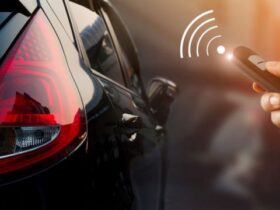Modern cars are equipped with various warning lights on the dashboard that illuminate to alert drivers of potential issues with their vehicles. Understanding what these warning lights mean and knowing when to take action can help you ensure your car stays in good working condition and prevent further damage. Here’s a comprehensive guide to decoding your car’s warning lights:
1. Check Engine Light
The check engine light is one of the most common warning lights that drivers encounter. It can indicate a range of issues, from a loose gas cap to a more serious engine problem. When this light comes on, it’s essential to have your car diagnosed by a mechanic to determine the exact cause.
2. Oil Pressure Light
The oil pressure light alerts you to low oil pressure, which can lead to engine damage if not addressed promptly. If this light comes on, pull over safely and check your oil level. If it’s low, top it up immediately. If the light continues to stay on, seek professional help.
3. Battery Light
The battery light indicates a problem with the charging system. It could be a failing battery, faulty alternator, or loose connections. Ignoring this light can result in your car stalling or not starting. Have your battery and charging system checked as soon as possible.
4. Brake System Light
The brake system light can indicate low brake fluid levels, worn brake pads, or a more serious issue with the braking system. It’s crucial not to ignore this light as it relates to your safety on the road. Have your brakes inspected by a professional immediately.
5. Tire Pressure Monitoring System (TPMS) Light
The TPMS light alerts you to low tire pressure, which can affect your car’s handling and fuel efficiency. Check your tire pressure and inflate them to the recommended levels. If the light persists, there may be a puncture or other tire issue that needs attention.
6. Airbag Light
The airbag light indicates a problem with the airbag system, which is essential for your safety in the event of a collision. Ignoring this light can result in the airbags not deploying when needed. Have your airbag system inspected by a professional immediately.
7. Coolant Temperature Light
The coolant temperature light warns you of an overheating engine, which can cause severe damage if not addressed promptly. Pull over, turn off the engine, and wait for it to cool down. Check the coolant level and radiator for any leaks. If the light persists, seek assistance.
Reacting to Warning Lights
- Do not ignore warning lights, as they are indicators of potential problems that need attention.
- Refer to your car’s owner’s manual for specific information on each warning light and recommended actions.
- If a warning light comes on while driving, safely pull over and assess the situation before deciding whether to continue driving.
- Seek professional help if you are unsure of the cause of a warning light or if it indicates a serious issue.
By understanding your car’s warning lights and knowing when to act, you can stay safe on the road and prevent costly repairs. Regular maintenance and prompt attention to warning lights will help you keep your car in optimal condition for years to come.












